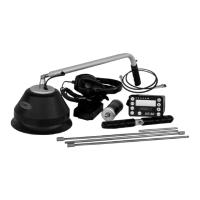NOTE: This equipment has been tested and found to comply with the limits
for a Class B digital device pursuant to Part 15 of the FCC Rules. These
limits are designed to provide reasonable protection against harmful
interference in a residential installation. This equipment generates, uses,
and can radiate radio frequency energy and, if not installed and used
in accordance with the instructions, may cause harmful interference to
radio communications. However, there is no guarantee that interference
will not occur in a particular installation. If this equip ment does cause
harm ll interference to radio or television reception, which can be
determined by turning the equipment off and on, the user is encouraged
to try and correct the interference by one or more of the following
measures:
- Reorient or relocate the receiving antenna.
- Increase the separation between the equipment and the receiver.
- Connect the equipment into an outlet on a circuit different from that
to which the receiver is connected.
- Consult the dealer or an experienced radio/TV technician for help.
10
When utilizing the multi-sensor for direct
connection to a pipe, or listening to buried
pipes located in soft ground or under a
turf surface, you will need to use the T-
Handle and sound rods included with the
unit. Using a threaded spacer provided on
the extension handle, carefully attach it
directly onto our sensor probe. Assemble
the T- Handle by snapping both the
extension handle and probe handle
sections together. Sound rods are then
secured to the threaded coupler on the
T- Handle assy. Sound rod lengths will be
determined on its application.
USE OF THE MULTI-SENSOR (OPTION B)
SPECIFICATIONS

